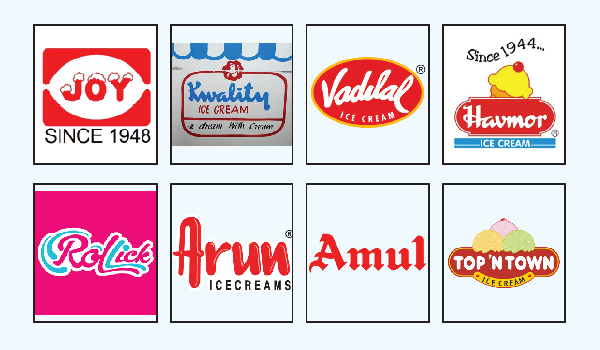Down the memory lane of 90s:
When I think of ice cream, the top flashback triggers in my mind are: wooden kothis, summer holidays, family treats, a festival-like atmosphere, gatherings of friends and relatives, and scores of eager and excited hands to help you with the making of freshly churned kothi ice cream at your door step. A little scoop of ice cream can take most of us right back to a summer vacation or an after-school social ritual.
This was the scenario in most Indian households until the 1980s. Ice cream was considered an item of joy and celebration. From toddlers to senior citizens, everyone loved ice cream. Hand-churned ice cream was the ultimate delicacy of mid-society India until the 1980s.
There were flavours and a few local brands in those days that defined our childhoods, making our summers more fun and memorable. Until 80s or even the 1990s, there were a handful of local but dominant ice cream players who were quite popular amongst consumers.
The overall market and the consumption pattern were quite seasonal for the ice cream industry. For the majority of them, ice cream was a luxury item, but it was essential for celebrations, birthdays, parties, and any joyous occasions.
The overall size of the ice cream industry was not significant until 80s or so. It has been a great journey for the industry to achieve a CAGR of over two digits over the past several years, reaching past Rs. 20,000 crores from a less than Rs. 1000 crore industry in the 1980s.
Let’s revisit a few popular ice cream brands of the retro era, some of which have now become Pan India brands over the years, surviving the onslaught of fierce competition.
There are quite a few brands that can be termed “vintage brands” because of their existence since pre-independence. Cities like Mumbai, Kolkata, Bangalore, Pune, and Ahmedabad have especially contributed to the development and popularisation of the ice cream market in India. Let’s glance through some of the oldest as well as vintage ice cream brands; the majority of them were family owned.
Oldest brands:
- Joy Ice Cream is one of the oldest in Mumbai. Their “Ball Ice Cream” became an instant hit among the kids around the 1990s, since 1948 in the business.
- Kwality (now Kwality Walls): Feast and cornetto became the rage in the 90s.
- Vadilal: A Gujarat-based brand in existence since the 1950s and now one of the leading brands in India, their rainbow-shaped casatta still brings back good memories.
- Havmor has been in business since 1944 and is now a leading brand in India. A pioneer of the Dhanteras container scheme and brand known for innovation, consistent quality, and value for money. Now it’s Havmor Lotte, a Gujarat-based brand, again.
- Rollick: Kolkata tasted chocolate fudge and banana splits around the 1980s in sundae-style cups.
- Arun: Anyone who grew up around Chennai in the 1980s will remember how popular this brand was for its black current, chocolate, mango, and butterscotch flavours. Now a dominant southern brand and available in several parts of the country.
- Amul: Amul’s foray into the Indian ice cream market was quite late, but it disrupted the overall market and became the No. 1 brand in India. It is once again a Gujarat-based brand.
- Top n Town: Brand of Madhya Pradesh used to be known for Black Forest Cake for the kids growing up in the 90s.

Vintage brands and shops: Mostly regional and local small players, but amazingly innovative and popular among consumers for years.
- Rustom, Mumbai: Since the 1950s, Nariman Point has been known for its innovative, travel-friendly ice cream flavours packed between wafers.
- Taj Ice Cream, Mumbai: Known for hand-churned ice creams since the 1800s, it’s quite popular among tourists too.
- Apsara Ice Cream, Mumbai: Since 1971, known for their roasted flavours of almond, Pani Puri Pataka, Guava etc.
- Corner House Bangalore, known since the 1980s for its Death by Chocolate loaded with cocoa-based sauce and nuts, has a cult-like following.
- Famous Ice Cream, Hyderabad: Since the 1950s, Hyderabad has been known for hand-churned, additive-free frozen treats.
- Sujata Mastani, Pune: Since the 1900s, known for traditional Indian flavours
- Nirula’s, Delhi: since the 1970s, known for 21 flavours of ice cream, now no longer in existence.
- Jay Mahal, Jaipur: since the 1980s, known for sundaes

Present of the ice cream industry: 1990s to 2023
The foray of Amul into the ice cream market disrupted the nascent ice cream market in India until the 1990s. The Amul became the real “game changer” in the ice cream category with its real milk, real ice cream campaign, offering hundreds of variants at an affordable price and within reach of the ice cream-starved masses.
They brought in quality, standardisation, and technology along with innovation. There were a few respected homegrown brands like Havmor, Vadilal, and a few others too, which, with Amul, contributed hugely to the overall growth of the nascent ice cream industry post-2000s.
Technology, mass production, untouched operations, innovative flavours, and packaging became the ” Buzz ” word for this industry, and since then there has been no looking back. Overall, the Rs. 20,000 crores+ market between organised and private players is steadily growing in double digits despite the “corona washout.”.
Over the years, the preferences and mindset of consumers have changed quite a bit, with a shift towards artisanal, premium, natural, probiotic, wellness, gluten-free, sugar-free, and low-fat healthy options, and Gen Z preferring to have an e-commerce platform for deliveries.
The recent trends are more towards chocolate, fruit, natural, and artisanal options in the form of bars, cones, tubs, and take-home packs. Western and northern India continues to be the dominant players between them.
The general trade channel and impulse category are still ruling over other channels. However, e-commerce and online channels are seeing growth post-Corona. Fresh ice cream, customised toppings, and ice creams without artificial flavours and colours are in demand, especially among Gen Z.
There are 10–12 pan-India leading brands that have the lion’s share of the ice cream industry, while the share between local players is divided as most of them cater to the HORECA segment. There are at least 15–25 small local players in each city. Per capita consumption is still abysmally low (400 ml) compared to 20+ litres in European and western countries.The current challenges for the industry are rising input costs, local competition on pricing, taxation, cold chain, and power situation in certain pockets, especially in rural areas, and perceptions of cold and cough due to ice cream consumption in winter months, unlike in western countries where it’s part of the diet after dinner as dessert, making it a year-round business.
Pure milk-based ice cream vs. non-dairy fat-based ice cream is available at the same price to consumers, and little awareness of this aspect is also more of a consumer-centric challenge from the manufacturer’s perspective.
Future of the Ice Cream Industry: 2023 onwards
Post-Corona, food safety, quality, hygiene, and health and wellness seem to have become the primary focus for consumers. There is a growing chance that consumers are likely to prefer packaged products over loose and seemingly unhealthy products.
In the future, consumers may demand quality and wellness in all food items consumed, including ice cream. Nutritional labelling, allergens, use of ingredients, calories, delivery model, and brand reputation will be the deciding factors besides innovation.
I see significant scope for market growth by increasing either per capita consumption levels, penetration (in rural markets), or both. Seeing the growth trends of the past few years and the boosting of the market post-Corona, I see a great future for the ice cream industry for several logical reasons.
For example, there is a severe shortage of high-quality brands in tier II and tier III cities in India. There is also a growing need to adapt to the digital mode of selling due to the reduced out-of-home consumption experienced during pandemic time. Quick commerce is going to play a crucial and significant role in the ice cream industry in the coming years.
Cross-cuisine flavours, immunity boosters, plant-based or vegan ice cream, wellness ice cream, sugar-free, gluten-free, low-fat, premium, and novelty variants can become the game changers for this industry in time to come.
The industry needs to focus on kids and Gen Z’s preferences while developing ice cream variants because India has the youngest population and they are the major consumers.


